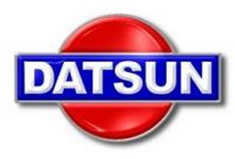Published 2007
Suspension Check
Todd Osborn
It's fairly easy to check for wear on the tie rod ends (steering arms), drag link (aka cross rod) ends, ball joints and control arm pivots (swivel joints). Determining if they are worn out is a little more challenging, I don't know of any wear limit specs, the roadster manual says no movement (probably conservative, but suspension failure are *bad*).
The front suspension joints must be unloaded to examine the ball joints, tie rod ends, drag link ends, steering gear, and idler arm. The process is the same for the the left and right sides, do one side of the car at a time:
Place a floor (or scissors) jack under the lower control arm (use a wood block to protect the shock absorber mount). Car in gear, emergency brake on...
Jack the control arm up until the tire is about 1" off the floor, as you slowly jack note the movement of the sway bar. It should track the movement of the control arm and pivot about a single axis, no lateral movement. Abnormal movement mean the sway bar bushings should be replaced.
Grasp the top and bottom of the tire and try to rock the wheel. If> the tire/wheel move, but the suspension does not, the wheel bearings are loose.
Grasp the sides of the tire and turn the wheel a few degrees back and forth. All steering components should move in unison, no movement between components. Specifically note components that lag one another when you change directions. Look at all the joints (tie rods ends, drag link ends, pitman or idler arm shafts) on this side of the car. Very slight movement means the joint is worn, movement greater than 1mm the joint should be replaced.
Pry under the tire to lift the tire/wheel/steering knuckle assembly up and down. Look for play at the upper and lower ball joints. Again very slight movement means the joint is worn, movement greater than 1mm the joint should be replaced.
To check the control arm pivots, put the car and jack stands with the wheels off the ground (suspension at full droop).
Grasp the top and bottom of the wheel and try to pull in and out. You may need to pull fairly hard since the springs (stock) will still provide some suspension preload.
Look at the in-board control arm pivot points.
Repeat inspection with fore and aft force. A little movement here is acceptable, greater than 3mm and I would replace.
Replacement of even a few of these part will be $$$, but the car will be safer and handle much better. One can see why it is so important to grease the front end on a regular basis. BTW, I would like to make this into a tech tip -- comments (especially specs) are welcome.
Todd Osborn
2x68 2L (one with perfect front end, the other with bad lower ball joints, you can guess which I drive).
San Jose, CA
